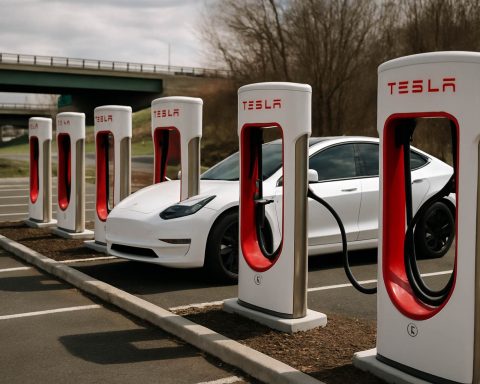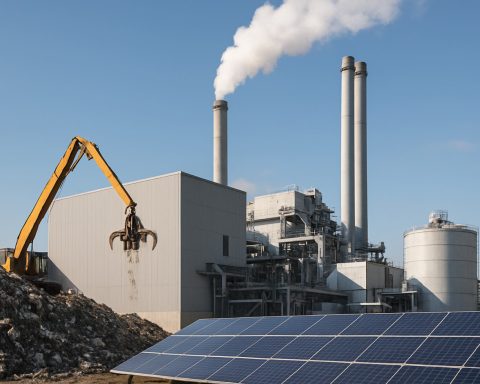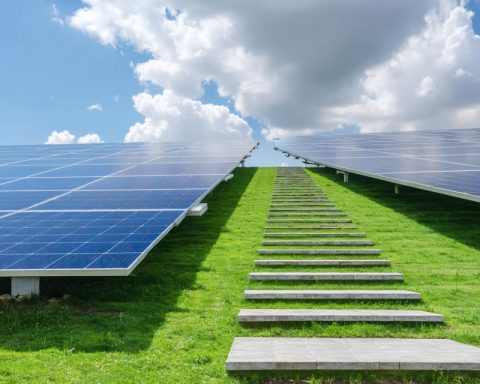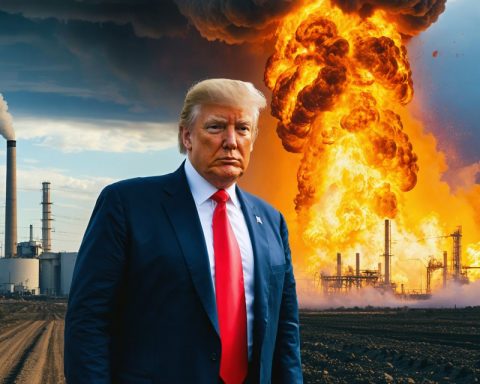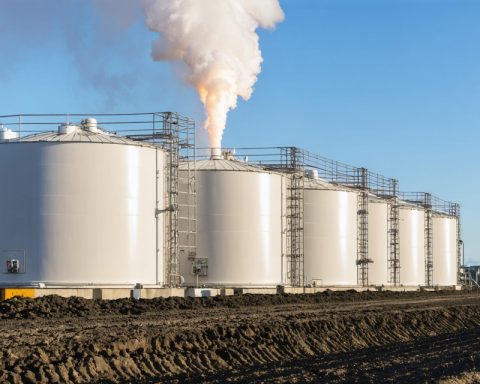- The U.S. Energy Department is considering closing the Office of Clean Energy Demonstrations, risking a $9 billion investment in clean energy innovation.
- This potential closure jeopardizes the nation’s leadership in clean energy breakthroughs, despite bipartisan efforts to support the office since its 2021 inception.
- Hydrogen hubs, pivotal for carbon-free fuel advancements, face funding cuts, endangering projects in regions like California, while sparing those in Texas and Appalachia.
- Direct air capture projects, crucial for carbon dioxide removal, could be axed, including a $1.2 billion Occidental Petroleum project, highlighting resource allocation challenges.
- Amid the proposed cuts, the Energy Department’s role in managing energy reserves and grid security is under stress, with job classifications adding complexity.
- The decision on the office’s fate reflects a critical point for America’s clean energy path, impacting carbon reduction momentum and global climate tech leadership.
A seismic shift looms over the United States’ quest for clean energy as the Energy Department eyes the closure of its pioneering Office of Clean Energy Demonstrations. This proposed shuttering threatens to withdraw a colossal $9 billion dedicated to cutting-edge programs, sowing uncertainty in the very sector designed to combat climate change through innovative solutions. Not yet set in stone, the plan envisions a drastic reduction of the agency’s workforce from its previous roster, significantly slashing its capacity to spearhead clean energy breakthroughs.
This office, the brainchild of bipartisan infrastructure efforts, was born in 2021 to accelerate the deployment of revolutionary clean energy technologies. Its potential dissolution underscores a turbulent era for America’s green energy ambitions and raises pivotal questions about the nation’s commitment to leading the global energy transition.
Hydrogen Hubs and Their Precarious Position
Amidst the proposed cuts, a staggering $10 billion in projects will be preserved and allocated to other Energy Department divisions. Central to these are hydrogen hubs—facilities where hydrogen, a carbon-free fuel, could revolutionize factory operations and power generation. Originally endowed with $3 billion, these hubs charted a promising path toward eco-friendly fuel utilization, hinting at hydrogen’s role as a climate action champion.
However, the looming cuts place billions earmarked for hubs across various regions, including California and the Midwest, in jeopardy. This selective pruning of funds, which spares hubs in Texas and Appalachia, underscores the high-stakes balancing act needed to fulfill clean energy visions amid fiscal restraints.
Tackling Carbon with Direct Air Capture
Crucial projects such as direct air capture, an innovative technology designed to draw carbon dioxide from the atmosphere, also face an uncertain future. The potential axing of such initiatives, including a significant $1.2 billion award for Occidental Petroleum Corp.’s subsidiary project, signals a challenging recalibration of resources and focus.
As the energy landscape undergoes this tectonic upheaval, the Energy Department’s expansive role—from safeguarding the nation’s energy reserves to defending the electricity grid from cyber threats—faces additional stressors. Recent efforts to classify thousands of jobs as “non-essential,” directed by a governmental efficiency team, add yet another layer of complexity to an already fraught environment.
The High Stakes of Innovation
What lies in the balance is a critical juncture for America’s clean energy trajectory. The potential dismantling of the Office of Clean Energy Demonstrations could stall the momentum needed to realize significant reductions in carbon emissions and undermine the nation’s positioning as a leader in climate technology innovation.
While the final decision waits in the wings, this tumultuous period serves as a clarion call—reaffirming the imperative need for unwavering commitment to sustainable energy solutions. As federal decisions unfold, the world watches, knowing that the strategies selected today will echo for decades, shaping the future of energy and the planet’s wellbeing.
A Nation’s Green Energy Ambitions Hang in the Balance
Introduction
The proposed closure of the U.S. Department of Energy’s Office of Clean Energy Demonstrations (OCED) threatens to withdraw billions in funding intended for advanced clean energy initiatives. This move potentially signals a significant setback in America’s battle against climate change. Beyond the initial concerns raised in the source article, this piece delves into various dimensions surrounding this development, outlining market impacts, industry trends, and potential solutions.
Market Forecasts & Industry Trends
1. Impact on Clean Energy Market Growth: The abrupt withdrawal of $9 billion may slow down the clean energy market, which has been rapidly growing due to increased government investment. Global investments in renewable energy hit a record $500 billion in 2022 (BloombergNEF). The U.S., one of the leaders in clean tech deployment, might lose its competitive edge.
2. Trends in Hydrogen Energy: Hydrogen technology has been gaining traction, with North America leading in pilot projects. The U.S. government’s initial allocation for hydrogen hubs was intended to solidify its position in this burgeoning sector. Losing significant funding could have ripple effects on related technologies, such as fuel cells and hydrogen storage solutions.
3. Direct Air Capture Initiatives: Direct air capture technology is vital for meeting global net-zero targets by 2050. Despite its potential, it remains costly and in its infancy. Any disruption in funding could delay breakthroughs necessary to reduce technology costs.
Real-World Use Cases
– Hydrogen Hubs: Facilities like those in the Midwest and California were projected to reduce industrial emissions substantially. They serve as real-world case studies demonstrating hydrogen’s potential as a clean alternative to natural gas in manufacturing and even in heavy transportation.
– Direct Air Capture: Projects like Occidental Petroleum Corp.’s are pivotal in mitigating emissions from industrial sources and could be instrumental in rural regions that lack access to other clean technologies. These technologies help in managing emissions from local industries and power plants.
Pros & Cons Overview
Pros:
– Stimulates innovation in clean energy technologies.
– Potential job creation in renewable sectors.
– Accelerates transition to a low-carbon economy, decreasing reliance on fossil fuels.
Cons:
– High initial costs and scalability challenges.
– Possible underutilization of developed infrastructure if government support wanes.
– Regional disparities in technology deployment, potentially widening the economic gap.
Pressing Questions and Answers
– Why is the Office of Clean Energy Demonstrations Closing?
The closure aligns with governmental efforts to streamline operations and increase fiscal efficiency amid budget constraints.
– How will this affect employment in the clean energy sector?
Thousands of jobs could be reclassified or cut, impacting both direct employees and associated industries.
– What can be done to mitigate the impact?
The government could reallocate resources to prioritize staple projects like hydrogen hubs and direct air capture, securing essential funds for their continuation.
Actionable Recommendations
1. Advocacy for Continued Funding: Stakeholders should engage with policymakers to emphasize the long-term benefits of sustained clean energy investments.
2. Diversification of Funding Sources: Seeking private investment and public-private partnerships can provide alternative pathways to project financing.
3. Increase Local and State-Level Initiatives: Encouraging state governments to take proactive stances in supporting local clean energy projects can cushion the blow of federal withdrawals.
Conclusion
While the potential closure of the Office of Clean Energy Demonstrations paints a grim picture, it also offers a wake-up call to re-examine how the U.S. funds and supports its clean energy landscape. The outcome of these federal decisions holds long-term implications for the nation’s role in global climate initiatives. Strategic resource allocation and increased stakeholder involvement could mitigate adverse effects and sustain the momentum necessary for a greener future.
For more insights on energy innovations, visit U.S. Department of Energy.







